The terraces of the Amalfi Coast are a unique feature of the landscape, characterised by their steep slopes and small plots of land used for agriculture. The terraces are an essential part of the region’s cultural heritage which is why they are also listed as a UNESCO World Cultural Heritage Site. By providing a beautiful view of the coast and sea, the terraces attract millions of tourists each year.
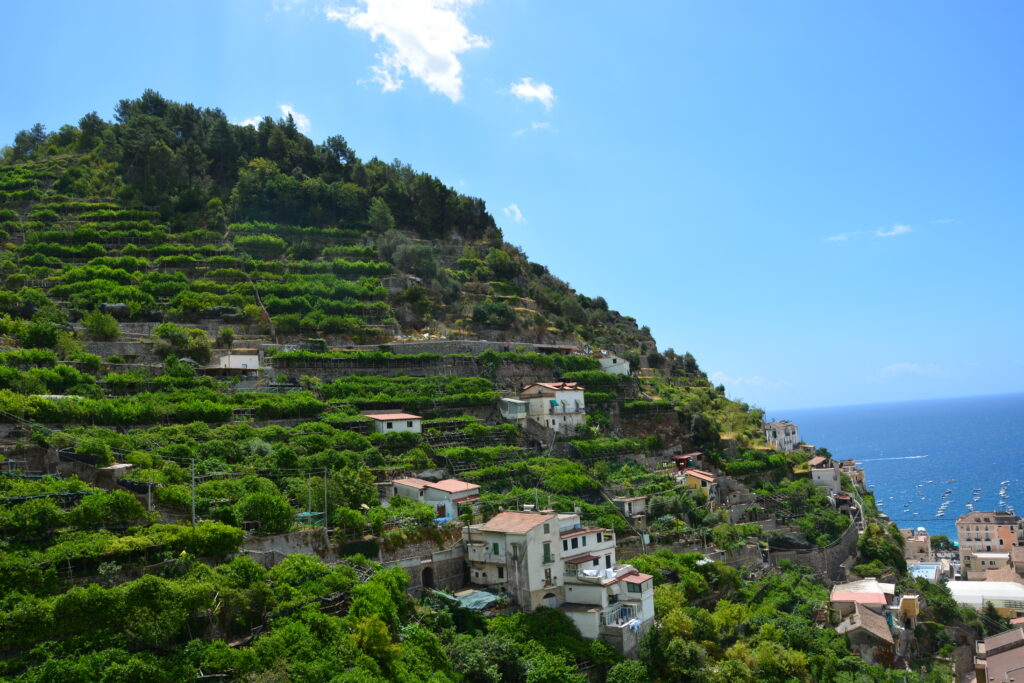
BUILT FOR AGRICULTURE
To make agriculture in the jagged environment of the Amalfi Coast possible, terraced landscapes provide the possibility to create more even, arable land. The terraces were built over centuries and as early as the 12th century by the local people, who used dry-stone walls to create level plots of land on steep hillsides. Farmers can cultivate crops such as lemons, olives, chestnuts, and grapes by terracing the hillsides making terraces very important for agriculture. Promoting local products helps maintain the landscape. You can learn more about regional products of the Amalfi Coast here.
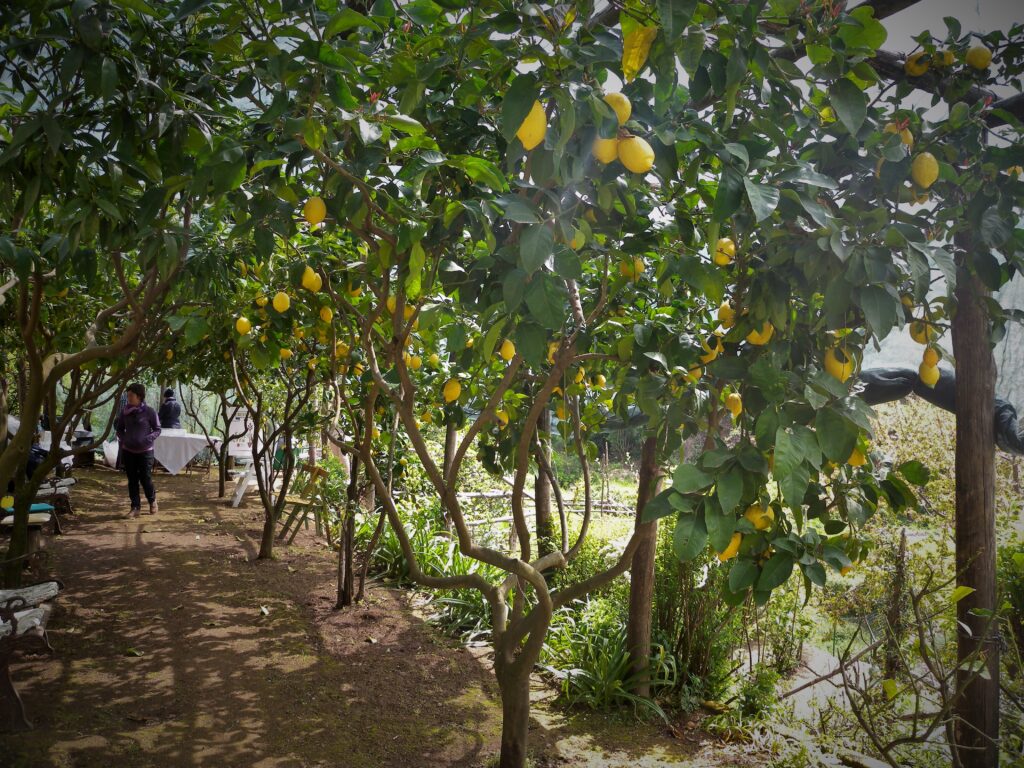
ABANDONMENT OF TERRACES
As terraces face many threats, their structural stability will decrease over time. Especially during rainy periods, well-made drains are fundamental for a working system. Obstacles occur if drainage is poorly built or if the walls are no longer taken care of. This phenomenon can be seen all around the Amalfi coast. Erosions occur on sloping ground and the territory is characterised by a high hydro-geological risk. Right after terraces are abandoned, erosion is generally higher. When local shrubs begin to grow the erosion begins to decrease.
The main issue is that the farmers are getting older and their children seek work elsewhere outside of the agricultural sector work. Due to the geographical location, machinery cannot be used in most cases, which makes the work very labour-intensive. Even repairing a wall takes a lot of knowledge and physical strength. In addition, many sites cannot be reached easily by car and you need to walk in the woods on very tiny and badly preserved hiking paths. This is especially labour-intensive when the crops get harvested and several tons of food have to be transported. In general, the terraces which are difficult to access are the first terraces to be abandoned. As a rule of thumb, you could say, the easier the terraces are accessible, the better preserved they are.
But it is possible to repair these walls. One example of this is the dry-stone wall of ACARBIO. The wall was completely gone at one site, but a local craftsman repaired it. The repair of this section took nearly 2 days of hard work, but as you can see in the picture it is as good as new! The magic of this wall is that no binding material was used and if it should fall again, it can be repaired with the same stones!
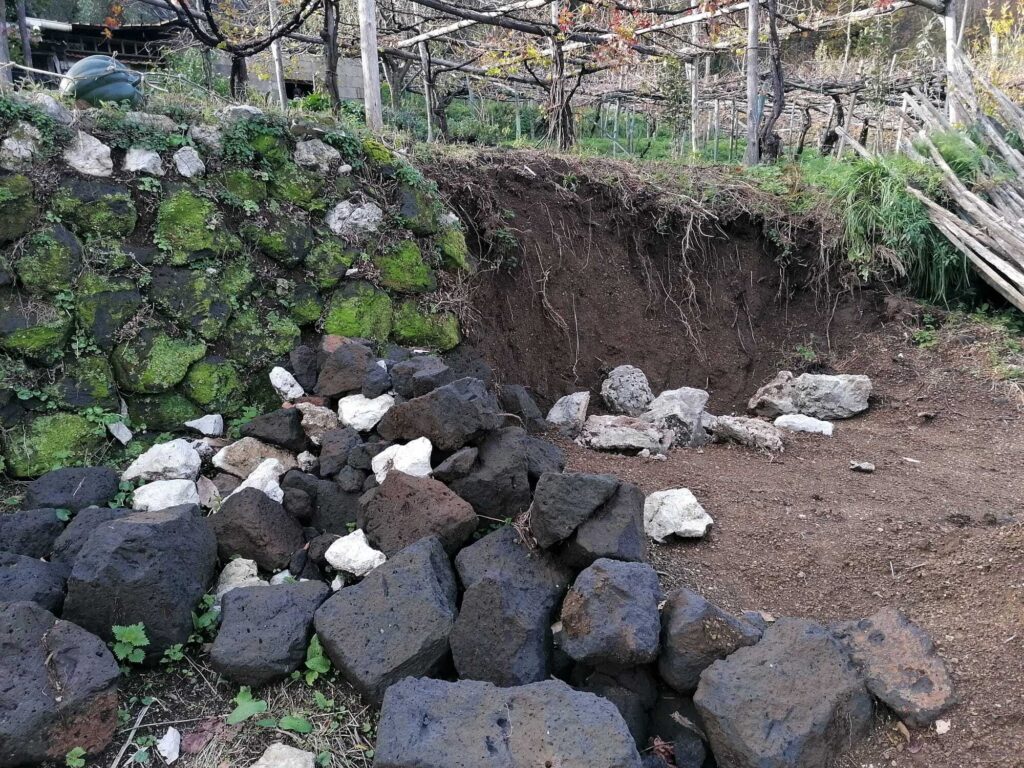
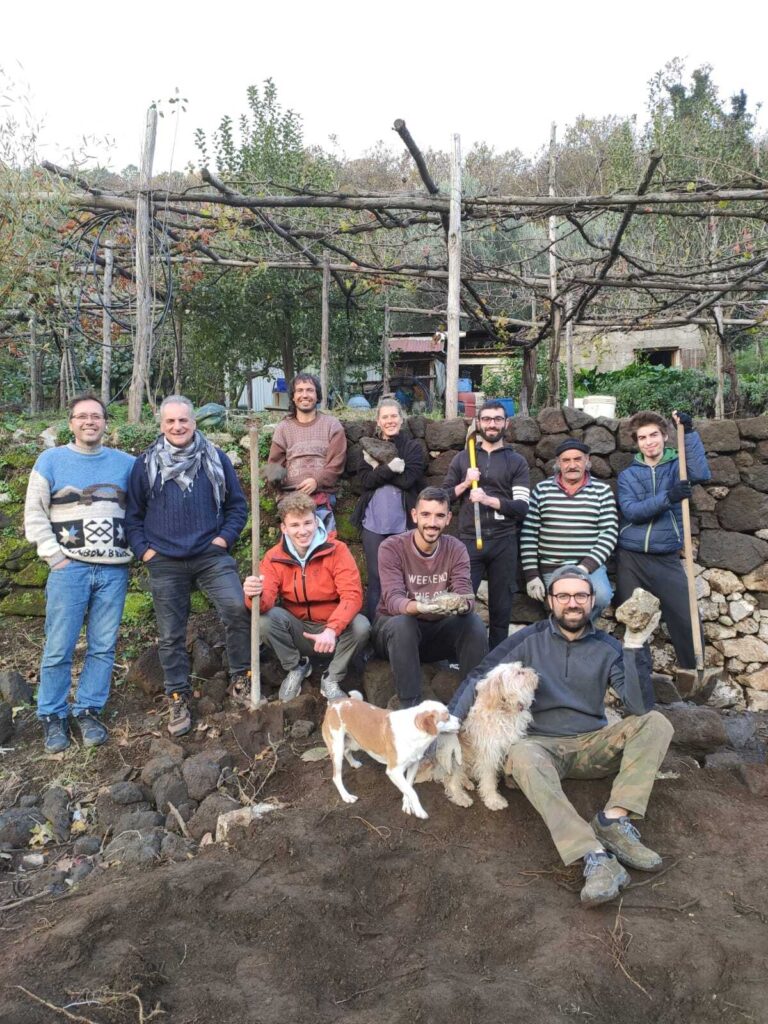
RECOVERING TERRACES
Climate change and human activities such as the overuse of water resources and illegal building can also put pressure on the terraces. Conservation efforts have been made to preserve and protect the terraces, such as sustainable agricultural practices and enforcing building codes. To protect the terraces, several measures can be taken. These include:
- Implementing sustainable agricultural practices, such as using drip irrigation and terrace walls to retain water and prevent erosion.
- pruning or replacing old stones or plants that have been damaged by erosion or weathering
- Enforcing building codes and regulations to prevent illegal construction.
- Carrying out regular inspections and maintenance of terrace walls and structures to ensure their stability.
- Promoting education and awareness about the importance of preserving the terraces, and encouraging sustainable tourism practices.
To successfully protect and preserve the terraces of the Amalfi coast it is important that residents actively participate in the development of strategies. However, recovery and maintenance interventions are extremely difficult to plan due to the fragmentation of land ownership. Public and private actors must collaborate to implement plans to protect terraces. Such partnerships would enable cost and resource sharing for effective implementation and adaptation.
To gain more data on the actual state of the terraces ACARBIO is mapping the terraces by collecting GPS data with smartphones. This project involves local authorities, representatives of different organisations of the Amalfi Coast, as well as private individuals. Its aim is to obtain a map which will serve landscape planning purposes. To learn more about this project click here.
Another example of an initiative to preserve terraced landscapes is “Adopt a Terrace” of the Valstagna Municipality, the Terre Alte Group of the Alpino Italiano Club and of the Department of Geography of the University of Padua in the Brenta Valley. The project’s aim is to allow anyone to adopt a terrace, claiming directly or remotely the mountain of the Brenta Canal and thereby recovering abandoned terraces.
OPPORTUNITIES FOR THE FUTURE
Terraced landscapes represent a range of opportunities to face future challenges. They present small-scale agricultural systems, habitats for many different species and a high variety of agro-biodiversity and gastronomic traditions. In most of them there are still important water infrastructure constructions that could be taken back into use – e.g. systems of cisterns, channels and wells that could help with sustainable water management even during dry summer periods. Overall, the terraces of the Amalfi Coast are a valuable and unique cultural and ecological asset and need to be protected for future generations.
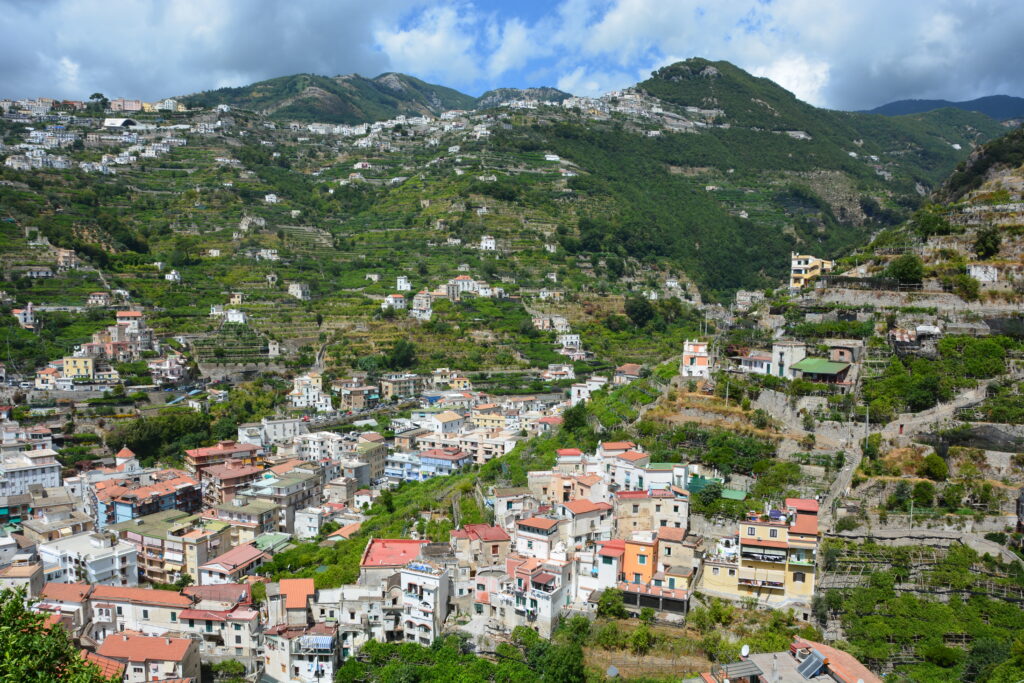
Sources
- Contessa, V. (2014): “Terraced landscapes in Italy: state of the art and future challenges”.
- Gravagnuolo, A.; Varotto, M. Terraced Landscapes Regeneration in the Perspective of the Circular Economy. Sustainability 2021, 13, 4347.
- https://www.blogcielomareterra.it/?p=1756
- https://www.euromontana.org/en/abandoned-terraces-adopted-support-mountains/
- https://www.acarbio.org/en/open-mapter-map-the-terraces/
- https://www.csmonitor.com/Environment/Inhabit/2017/0101/How-climate-change-threatens-famed-Amalfi-Coast
